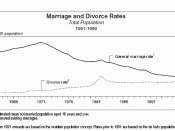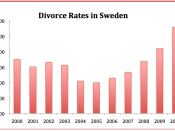Divorce in the United States
Divorce involves the recognition that a marriage has hopelessly
failed and that at least one of the partners has no desire to
continue the marital relationship. Divorce legally dissolves a
marriage, and permits the partners to remarry if they choose.
Divorce differs from an annulment, which declares a marriage
invalid because of some flaw in the contract.
The early American settlers brought with them three different
views on divorce: 1) the Roman Catholic view that marriage was
a sacrament and that there could be no divorce; 2) the English
view that divorce was a legislative matter; and 3) the
Protestant view that marriage and divorce were secular matters
to be handled by the civil authorities.
The Constitution of the United States did nothing to limit the
rights of the states to enact their own laws governing marriage
and divorce. Despite several efforts to amend the Constitution,
to allow Congress to pass federal legislation on divorce, to
this day the states retain separate laws.
Because divorce laws
vary from state to state, the 'migratory divorce' developed:
couples would move temporarily to a state where divorce was
easier to obtain than at home. For example, a couple living in
New York State, where until 1967 the only grounds for divorce
was adultery, would establish residence in Nevada -- a procedure
that took only 6 weeks -- and file for divorce on grounds of
mental cruelty.
Popular attitudes toward divorce changed as the United States
became more urbanized and less religious. The increasing
acceptance of divorce was reflected in court interpretations of
existing laws and in new legislation enacted by the states. Two
tendencies merged, making possible the establishment of new and
easier grounds for divorce. The focus of state divorce, which
previously concerned itself with specifying...


